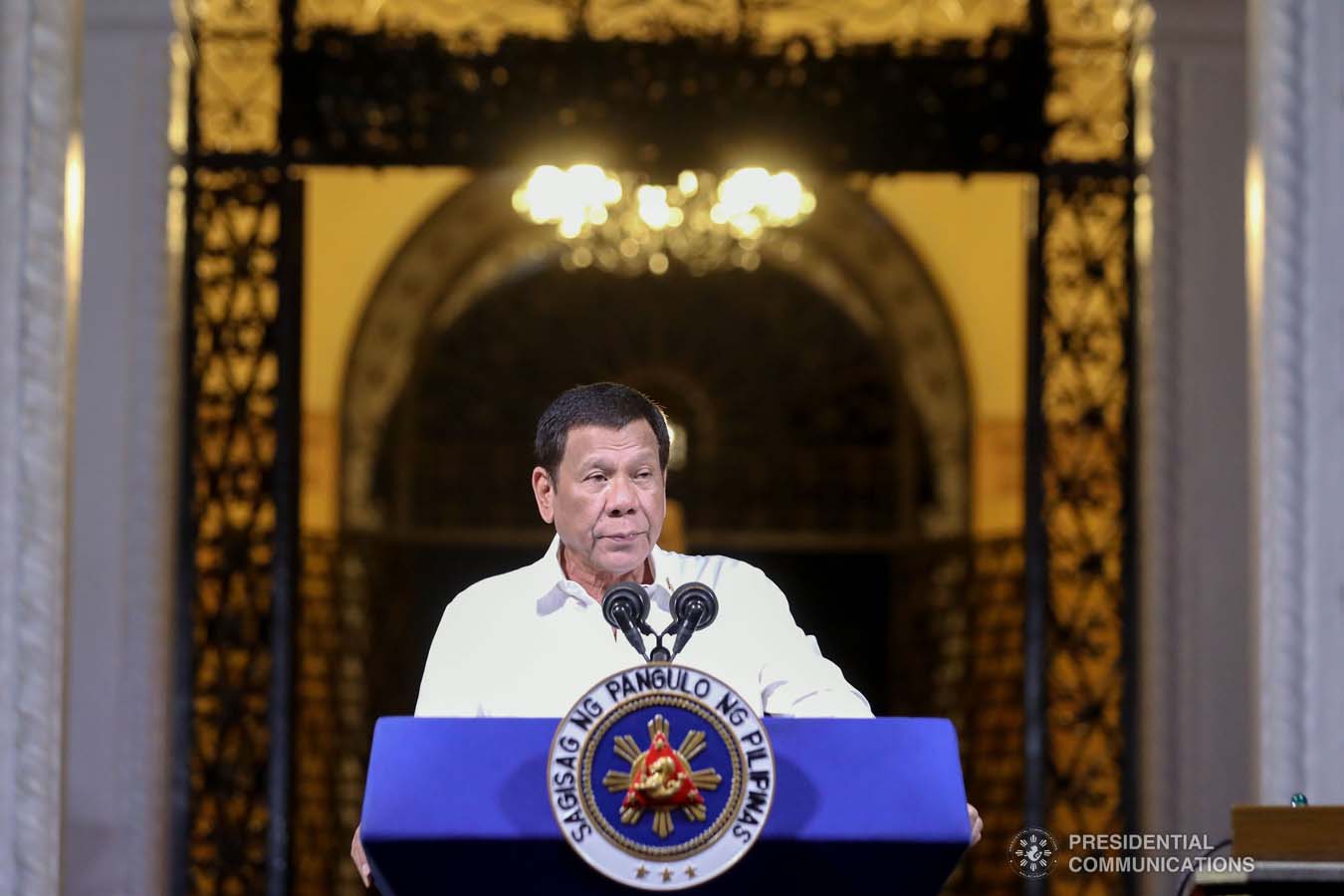Building legacies
By Chino Leyco
President Rodrigo R. Duterte began his presidency with the promise to usher in what he called the Philippines’ “golden age of infrastructure.”

President Rodrigo Roa Duterte
(REY BANIQUET/PRESIDENTIAL PHOTO / MANILA BULLETIN)
But at the midway point of his administration, the government unveiled a revised priority list with a stretched number.
From 75 flagship projects under the “Build, Build, Build” program, President Duterte now wants to pursue 100 projects that has a collective valued of ₱4.2 trillion consisting of transport, railways, bridges, highways, power, urban development and water projects.
But stretching his priority infrastructure plan will not necessarily mean an additional 25 projects for the Filipino people. What the Duterte administration actually did was it shelved some of its original big-ticket projects and substituted these with some projects which were no longer quite new.
Socioeconomic Planning Secretary Ernesto M. Pernia explained the government withdrew the projects they perceived as “challenging and costly,” and replaced them with “smaller but still game-changing” infrastructure development projects.
Revamping the flagship project list half-way was necessary for “continuity,” said Vince Dizon, president and chief executive officer of the Bases Conversion and Development Authority (BCDA).
Today, only two of the original flagship projects have been completed. Admittedly, not all in the President’s to-do list will be finished under his term, but Dizon vowed that a significant number will be completed before the Chief Executive steps down.
The BCDA head, who is also the Presidential Adviser for Flagship Programs and Projects, also promised that many of the 100 projects will be partially operational by 2022, while the rest will have significant progress moving into the next administration.
President Duterte’s spending spree to modernize and build the country’s badly needed infrastructure has also hit snags in recent years, and most, were due to bureaucratic delays, including Congress’ failure to pass his budget for 2019 on time.
The Duterte administration’s ambitious plan was not spared by the pervasive bureaucratic red tape in government systems. Recently, Senate Minority Leader Franklin Drilon described the President’s initial flagship projects as a “dismal failure.”
Only nine of the President’s to-do list have started construction, Drilon pointed out, and Dizon somehow concurred after admitting he himself was “not contented” with the progress of the infrastructure projects and “wanted to do even more.”
To give a boost to the anemic “Build, Build, Build” program was the inclusion — after years of hesitation — of at least 15 unsolicited public-private partnership (PPP) projects proposed by some businessmen.
President Duterte earlier shunned the use of the traditional PPP mode as the process supposedly slows down the implementation of projects. Instead, he shifted to what they called the hybrid PPP mode.
Under the hybrid PPP initiated by the Department of Finance (DOF), the government will build the project and later on bid out the operation and maintenance to the private sector.
But under the revitalized flagship infrastructure plan, about ₱1.39 trillion or nearly a third of the ₱4.2 trillion worth of 100 projects would now come from several tycoons and the private sector.
Also notable in the revised list is the inclusion of several PPP projects rolled out by the Aquino administration and now being constructed under President Duterte’s watch.
Included in the updated “Build, Build, Build” list are the ₱70.8-billion Metro Rail Transit (MRT) 7 of the Ramon S.
Ang-led SMC Mass Rail Transit 7, Inc., and the ₱735.6-billion New Manila International Airport in Bulacan.
Businessman Manuel V. Pangilinan’s ₱23.3-billion NLEx-SLEx Connector Road Project of Manila North Tollways Corp. (MNTC) was also among the new members of the flagship infrastructure list.
Likewise, the unsolicited projects included in the latest list are ₱102-billion rehabilitation of the Ninoy Aquino International Airport to be undertaken by the so-called “super consortium” backed by seven tycoons, and the ₱81.5-billion C5 MRT 10 project of C5 Mass Transit Corp. Ltd.
President Duterte also listed the ₱3.5-billion Fort Bonifacio-Makati Skytrain of Infracorp, ₱71.1-billion MRT 11 of Aerorail Integrated Transport Services, Inc., ₱50.4-billion Light Rail Transit (LRT) 6 Cavite Line A of Prime Asset Ventures Inc., and ₱25.5-billion upgrade, expansion, operations and maintenance (O&M) of the New Bohol (Panglao) International Airport by Aboitiz group.
Also in the pipeline are the ₱3.8-billion O&M and facility upgrade of Kalibo International Airport by Mega 7 Construction, the ₱78.9-billion Cebu Monorail Transit System of Udenna Infrastructure Corp. as well as the ₱48.9-billion development and O&M of Davao International Airport by Chelsea Logistics Holdings Corp.
Lastly, the list includes the ₱23.9-billion TPLEx Extension Project by San Miguel Holdings Corp., the ₱22.4-billion Cavite-Tagaytay-Batangas Expressway Project by MPCALA Holdings, Inc. and Metro Pacific Tollways Corp. as well as the ₱45.8-billion upgrade, expansion and O&M of Laguindingan Airport by Aboitiz InfraCapital, Inc.
The 100 flagship projects are part of the full “Build, Build, Build” program that is composed of thousands of infrastructure projects to be implemented all over the country. The estimated cost for the “Build, Build, Build” program is above ₱8 trillion.
Source: Manila Bulletin
